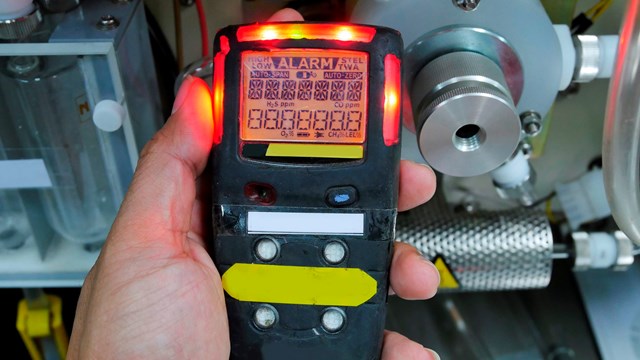Perhaps you’ve seen the commercials on television; a mob of people shouting “The Internet is slow as heck, and we’re not going to take it anymore!” Or the one where a succession of comedians tell jokes beginning with “My internet service is sooo slow….” and many of us can fill in the blank. While the Internet has begun to revolutionize the way we do business, recreation, and everything in between, technology for residential use has very often proved sluggish and frustrating. High-speed access, in the forms of cable modems and Digital Subscriber Lines (DSL) is available, but with varying degrees of success. Telecommunications companies, real estate associations, and legislators are all trying to come up with a solution to the problems of providing unilateral high-speed Internet access. Unfortunately, they can’t agree on what that solution might be.
DSL vs Cable
It is estimated that 90 million homes currently have Internet access. The vast majority of these have dial-up access through a phone modem. The household computer dials up to an Internet Service Provider (ISP) which then connects them to the Internet. Though by far the cheapest method of connection, dial-up access is extremely slow. Sometimes the line is busy and, depending on your ISP’s capabilities, you may be unable to get connected at all. Depending on the speed of your modem, downloading a large file can take up to half an hour, during which time your regular phone service is tied up. Upon recognizing the frustration and inconvenience of this situation about two years ago, phone and cable companies began competing to see which industry could provide an alternative to slow, unreliable Internet service.
Telephone companies such as Verizon Communications are offering DSL, which provides high-speed Internet access through separate phone lines in a building’s telephone room. The calls go through a central switching office, which can route hundreds of lines simultaneously. The number of users at a given time affects the speed of connection, which varies from several to dozens of times faster than a 28.8 Kbps modem connection. For $49.95 a month per household, Verizon will provide a DSL modem and DSL service within 15 days.
Critics complain that DSL often travels along regular phone lines that have been retrofitted to accommodate more bandwidth—like a pipe that has been widened—and this makes speed unreliable. Most DSL deployments transmit information at one Mbps or less. While significantly faster than a conventional modem, this is still short of the three Mbps required to view a high quality video transmission, for example. Another issue some users have with DSL is that it is being offered by a number of relatively small telephone companies who are at risk of going out of business. Most recently, Nortel Networks, the world’s largest supplier of telecommunications equipment and fifth largest DSL provider, announced that it will exit the DSL access business. Nortel cited a lack of profitability and diminished expectations of future growth as reasons behind the decision. They join other companies, including Northpoint— which went bankrupt in May—as failed initiatives in the high-speed access game. When a smaller ISP goes under, the consumers using the service must essentially start from scratch to re-establish their service. For some, the lower competitive market prices offered by smaller start-up companies aren’t enough to offset the possibility of interrupted or unreliable service if the company doesn’t make it.
On the cable front, companies such as Time Warner Inc., RCN Corporation, and Cablevision Systems are offering cable connection to the Internet. This does not tie up phone lines, and provides speed up to 100 times faster than a 28.8 Kbps phone modem. While advocates say cable access is the superior technology, it does have its own disadvantages. It is vulnerable to interference from within the network and may degrade over time as more households plug in. Also, cable is known for having a narrower upstream bandwidth, which makes uploads slow. Cable access is also cheaper than DSL, with Time Warner charging $39.95 per month for rental of a cable modem and service. Installation may take several days to several weeks depending on how busy the ISP’s work crews are. RCN sells high-speed access bundled together with cable television and phone service for one price. Their packages range from $76 to $118, which, according to a company spokesperson, is a savings of at least $30, compared to the price of purchasing the services separately. At the Web site DSLreports.com, anyone interested in high-speed access can read the latest news articles along with reviews of all the major companies written by ordinary people about their experiences with DSL and cable services.
Legal Considerations
Despite the obvious advantages of high-speed access, only 13 percent, or roughly 12 million homes, have a broadband connection. Of these, approximately nine million utilize cable modems and the rest use DSL. While cost may be a factor for many, access is also a key issue. Providing high-speed access to consumers in established buildings means first providing the network elements to get the system running. Since cable and telephony are considered different entities legislatively, the rules for access are different.
According to David Bronston, telecommunications attorney and partner at Wolf, Block, Schorr and Solis-Cohen, L.L.P., “In New York State, cable companies have a right of access to install equipment under New York state statute. There are no market opening regulations prohibiting exclusive agreements. For telephone service carriers, it is the opposite. The Federal Telecommunications Act of 1996 prohibited the signing of exclusive agreements, opening the market to competition, but does not grant mandatory access.
In the metropolitan area, the established cable companies are Time Warner Inc. and Cablevision Systems. In 1997, competition began in earnest when the RCN Corporation was established to offer a bundle of cable, phone and high-speed Internet access for one low price. According to Nancy Bayvek, director of public relations for RCN Corp., “We need to get access agreements from each individual building and then we install our own network. The building gives us the opportunity and then gets a share in the revenue.” Bayvek continues, “The existing law allows us access for cable and we often share conduit space with Time Warner. We have been lobbying for better access. The goal is to get access agreements being non-exclusive.”
According to Bayvek, RCN is currently in more than 800 buildings in Queens and Manhattan. “In the current marketplace,” says Bayvek, “The company feels we would be smarter to discontinue expanding into new markets and instead focus our attention on expanding within existing markets.” That would seem to make lobbying for access less of an issue, however, “We have been talking with the public service commission,” says Bayvek.
A legislative battle may be heating up in Washington with the introduction of two bills designed to speed up Internet broadband deployment. Two representatives who are members of the House Judiciary Committee have introduced “The Broadband Competition and Incentive Act” and the “American Broadband and Competition Act”. These two acts work together to strengthen market opening provisions and create financial incentives for companies to bring high-speed Internet to rural and under-served areas, as well as streamline how companies resolve disputes. In contrast, the broadband legislation being developed by the House Energy and Commerce Committee, the Internet Freedom and Broadband Deployment Act, H.R. 1542 relieves the dominant companies from opening their region to local competition and allows the incumbents to deny smaller companies access to network elements.
Locally, while access is crucial, finances are perhaps the hotter issue. Because telephone carriers have no mandatory right to access, they are often asked to pay a fee they can ill afford to building owner’s in order to implement service. According to Steven D. Cohen, real estate counsel at Verizon Communications Inc., “Verizon’s general policy is not to pay for access. Some companies—not ours—have been lobbying for mandatory access because they don’t want to pay either.”
Vincent Thomas, spokesperson for State Assemblyman Albert Vann explains, “Legislation was introduced last year that would require buildings to provide access to other providers of telephony service.” The primary lobbyists were acting on behalf of Windstar Communications and The Smart Buildings Coalition, an advocacy organization out of Washington, DC. Thomas continues, “In the end, it was felt that not enough consideration was given to the effect on landlords and the logistical realities of locating many telecom businesses within the limited space available in a building.”
In fact, property owners have been among the most vocal opponents of forced access. In early May, a spokesperson for the Building Owners and Managers Association (BOMA) International announced, “Staunchly defending its belief in the unconstitutionality of government-mandated free building access for telecommunication service providers, BOMA testified today before the House Commerce Committee’s Subcommittee on Telecommunications Trade and Consumer Protection.”
Says Cohen, “I understand that there is a law in Texas mandating access and it is rarely used. And in Massachusetts, the Department of Telecommunications and Energy passed mandatory access legislation and the real estate industry is suing. The regulations have still not gone into effect.”
In new construction, high-speed access is becoming a given. At 62 Cooper Square, the Carl Fisher buildings are currently undergoing a residential conversion to live/work lofts. Thanks to the presence of Samsung as a tenant in the ground-floor commercial space, the building is being completely wired with OC-3 capacity or “dark fiber”, suitable for media streaming, music production and video editing. According to Christopher Wilson, director of development for Stribling Market Associates, the Manhattan brokerage firm that is marketing the building, “People are willing to pay a lot of money for the option to live and work with this technology. For example, a film editor could phone in their work to Los Angeles and save a lot of time and money.”
With such a small percentage of Internet users taking advantage of broadband, one might wonder what all the fuss is about. Bronston says, “High-speed access is a great marketing device. It is becoming an amenity as critical as having an elevator was 50 years ago. High-speed access has tremendous potential for tenant acquisition and retention.”
Wilson agrees, “Sometimes the technology is ahead of the curve of what buyers expect and understand. A time will come when people will appreciate the technology and demand it."
Ms. Mulhare is a freelance writer living in Forest Hills, Queens.







Comments
Leave a Comment